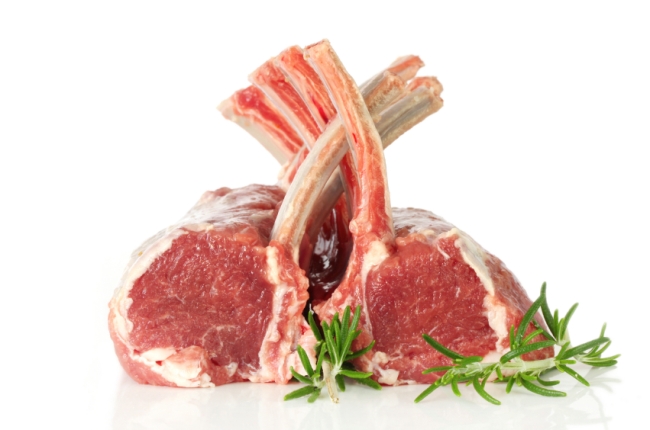Over the past year, there was a measure on the California ballot that dealt with how animals are treated while they are being raised for food. There was also a big to do about how ducks are treated in regards retrieving their livers for foie gras. There have also been some videos on some of the social media outlets showing animals being slaughtered in a slaughterhouse.
I guess the one that really touched a nerve on social media was the video that showed a horse being knocked out and slaughtered.
IF YOU ARE SQUEAMISH OR HAVE A WEAK CONSTITUTION, I WOULD SUGGEST YOU STOP READING NOW.
The horse was knocked out with the backside of an axe. My only thought was that this had to be in the European Union somewhere (probably France) because horsemeat is sold in the butcher shops there and, in some instances, is a major source of protein.
That being said, I, for one, don’t think I could bring myself to eat horsemeat. As Col. Sherman Potter said in one of the M*A*S*H episodes, “A horse is a noble creature”. Granted the character was not only a horse lover, but also rode in the cavalry in WWI. I am sure that a horse saved the character’s life a few times for him to say that it “is a noble creature”.
But let’s get down to the crux of this. Did the video upset us or cause a stir because it was a horse or because it showed how animals are slaughtered? To some degree, I think it is both.
Now, I know the United States does not allow horsemeat to be sold for human consumption. And I know that there are no slaughterhouses that slaughter horses in America. The slaughterhouses that do process horsemeat are actually in Canada, so the horses get shipped there. But you may be asking “Where on earth do people eat horsemeat?” Well, here is a list of the top countries that love and consume horsemeat…
France China Kazakhstan Indonesia
Germany Belgium Japan Switzerland
Scotland (well, there’s a restaurant in Glasgow that sells it)
I will say for the record that horse would not be my first choice… and if that was the only thing on the menu, I think I would have a salad… and I am not big on salads.
But how are these cows, and pigs, and lambs getting to our table?
Via abattoirs. And what is an abattoir you may be asking? Plainly put… a slaughterhouse.
Not really the most pleasant topic, I know.
There are some unpleasantries in life, and where our meat comes from is one of them. But it is an essential part of our way of life here in the US, and for most countries.
So , what happens when the animal goes to the slaughterhouse? It depends what kind of animal we are talking about.
If we are talking about cows, the process is different than pigs or sheep. I’m not even going to get into chicken on this one
When a cow is slaughtered, the cow is unloaded off the truck, and at some point after that (which could be immediately or a day or two later) is ushered into a walkway that leads to the slaughterhouse kill room. The cow is stopped shortly before the room and is gated in much like a bronco at a rodeo, in the sense that it can’t back up and it can’t go forward. A worker is standing above the cow and places a pneumatic bolt gun to the cow’s head. At the pull of the trigger, the bolt pierces the skull and hits the brain. This drops the cow to the floor. Because the bolt hits the brain, the cow is still alive, but does not feel anything. It is in a vegetative state. The cow is immediately hoisted up by its back legs and its throat is slit. It is at this point that the cow is killed. The carcass is bled out; meaning all of the blood is drained from its body by gravity.
After the cow is bled out, the skin is removed. There are two ways to do this… by hand or by machine. The old school abattoirs would do it by hand. The skin is loosened off the hind legs and attached to clamps that pull the hide right off the animal. This is done in about 30 seconds.
After that the head is removed and the carcass is gutted and its internal organs are check for abnormalities. If there are problems with its organs or tumors are found in the carcass, the animal is not fit for human consumption. And who checks the carcass? The resident USDA agent at the facility.
Ok, I can hear the moans now about how the USDA doesn’t do a good job because of the recent beef, peanut butter, and ice cream recalls, and how so many people got sick. I am not here to defend them or crucify them.
Back to the cow…
After the cow is inspected it is cut in half, from tail to neck. The carcass is rinsed, cleaned, and put into a HUGE refrigerator to age. The beef has to be aged for at least four weeks – count ‘em … 28 days – before it is cut down into its primal cuts. And if you are wondering what primal cuts are, they are the big cuts of beef.
Beef is divided in primal cuts. These cuts are the chuck (or shoulder), rib, short loin, tenderloin, sirloin, bottom sirloin, round (the top half of the legs), shank (leg) flank, plate, and brisket.
Chuck is used for roasts, stews, and burgers. Because it is the shoulder of the cow it gets a workout from walking and therefore can be quite tough, and needs to be cooked low and slow.
Ribs… well, they don’t need and explanation, do they?
The short loin, tenderloin, sirloin, and bottom loin are located past the last rib of the animal. We have all had a top sirloin steak and filet mignon. The filet comes from the tenderloin.
The top round is the back leg. Some places use this as a minute steak, but, because it is used so much by the cow, it can be very tough if it is not cooked properly.
Ever had osso bucco? Well, that’s the leg you were eating. It’s not something you can throw on the barbeque for 10 minutes and eat. You COULD… but you wouldn’t want to.
Flank is used for carne asada. It needs to be marinated for a bit to tenderize it.
Brisket… when I hear “brisket” I think barbeque. Smoked for 18 hours and tender, with a really good barbeque sauce.
From the primal cuts we get the “food service” cuts, or the portioned cuts, which can be ordered to pretty much any size you want. From a six ounce filet to a ten ounce filet. These are the cuts that we find at our local grocery store.
For pigs and lambs, it’s pretty much the same, except for the first part. The animals have electrodes clamped to the heads behind their ears and the brain is scrambled. Then their throats are slit, they are bled out, the process is essentially the same, except for the aging. Lamb and pork can be eaten the day they are killed.
You may say that the process is cruel and inhumane. Some of you may even say “How would you like to have electrodes put on YOUR head and electrocuted and have your throat slit?” We are not talking about humans here, folks. We are talking about animals… the food chain… the “circle of life”.
Yes, there are abuses in the industry. Yes, there are people who do things to the animals that should NEVER be done to an animal. These things are wrong and should not be tolerated.
If, however, animal is stressed, the adrenaline system starts pumping on over drive. And what does this do? It taints the meat. The muscle, or meat, get a heavy dose of it and it tastes bad. If the animals are being abused right before slaughter the meat will not be meat to eat. The best thing for the animal is, for lack of a better phrase, to walk right in to it. If the animal doesn’t know what’s coming then the animal will not be stressed.
In fact, there are people who design abattoirs with the sole purpose of keeping the animal calm. This helps the animal, the person who is doing the deed, the abattoir, and, in the end, you and me.
As a chef, I truly believe that we need to honor the animal that is on our plate. You may find this kinda weird, but it’s true. And what do I mean by “honor the animal”? I mean that every single part of the animal is used, so that there is no waste. Nose to tail…
For instance, what would you do with the intestines of the pig? Use them for sausage casings. The blood from a pig? Make black pudding or, as we here in the US call it, blood sausage. The head of a cow? Beef cheeks are really god to eat… very rich, and very good. The tongue? VERY old school meal and very popular in the Kosher and Middle Eastern cuisines. Remember those movies set during the Revolution 200 years ago? What did they carry the gun powder in? The steer’s horn. The tail? Oxtail soup is delicious. The stomach of a sheep can be used for the delightful Scottish dish, haggis. One time, surgeons used a pig’s heart to keep a man alive who was on the heart transplant list. The hide of a cow is used for shoes, belts, pants, skirts, hats, wallets… the list goes on. For the longest time the NFL was using footballs made of pig skin; hence the nick-name of the ball.
Oh, and all those bones… use them to make a great stock for soup, rice, and sauces.
There is a really good video on youtube.com that shows a family in West Virgina slaughtering pigs. The care and concern for the animal is really touching, in the sense that they know what they are doing, and they know the good that will come of it. Here’s a link to it… https://www.youtube.com/watch?v=f6cXmY7Ln0k
I understand that there are places – and we have all seen them on the nightly news – that abuse the animals, that don’t care for the animals, that act like spoiled children and the animal is their new toy, there are people who have no respect for the animal let alone themselves. I get it. There are abuses in the system, as there are in ANY system. BUT, I think that those abuses are few and far between. And, although I am not a PETA fan, I do feel that the abuse of any animal is horrific and should never be tolerated.
Take this for what it is. I am only saying that we need to be aware of where our food comes from, and I mean REALLY comes from. It’s not from the grocery store. It’s from a farm whose land is worked and cared for; whose animals are what keeps that family (and ours) going; and whose livelihood depends on those animals that are raised there.
When I was a kid, I saw bumper stickers the read “Farming is EVERYONE’S bread and butter”. How true that is.
So the next time you cut into a beautiful center loin pork chop, or order the prime rib for Sunday dinner, or get that last piece of meat for the lamb chop, remember where it came from. And be thankful that someone did the dirty work for you.
Okay… that’s it… I have said my piece.
Until next time…
Eat. Drink. Laugh. Love.






